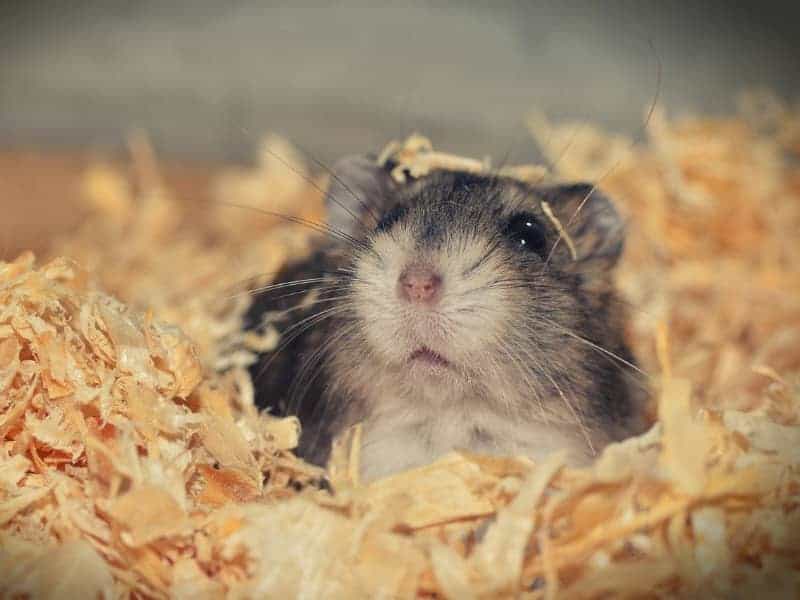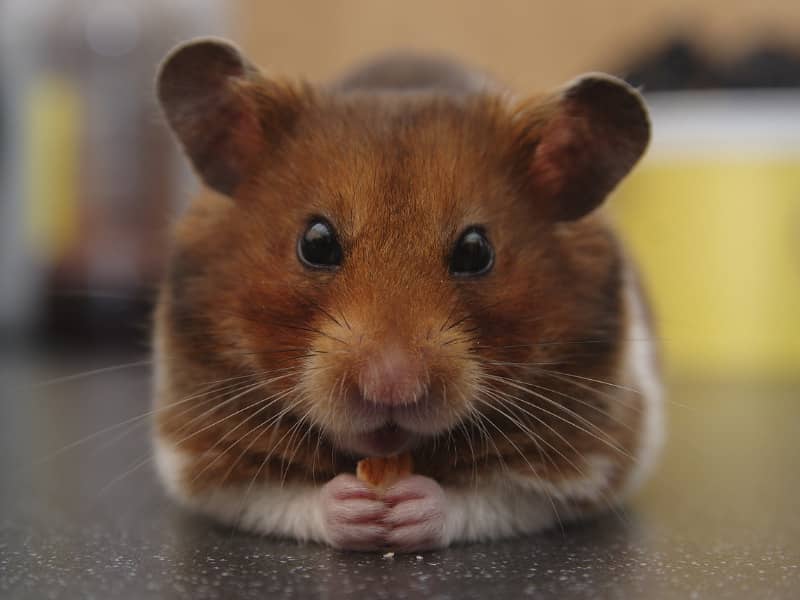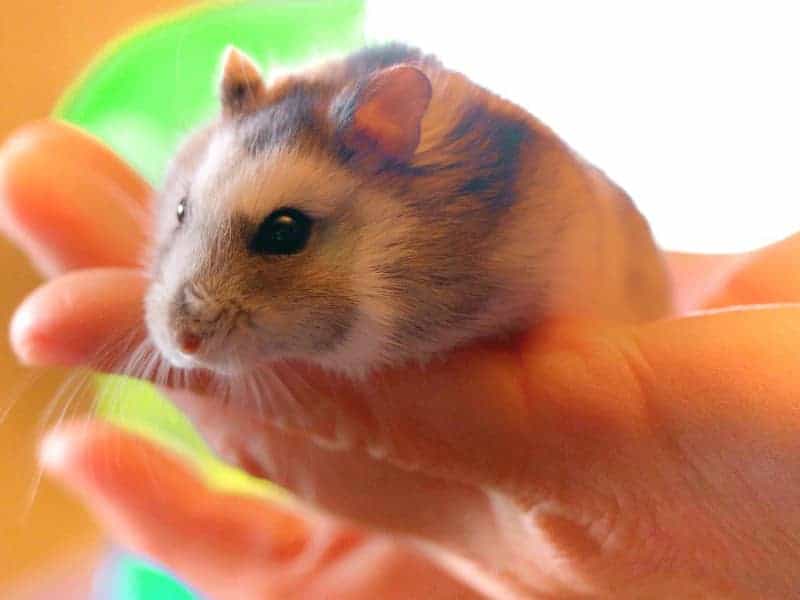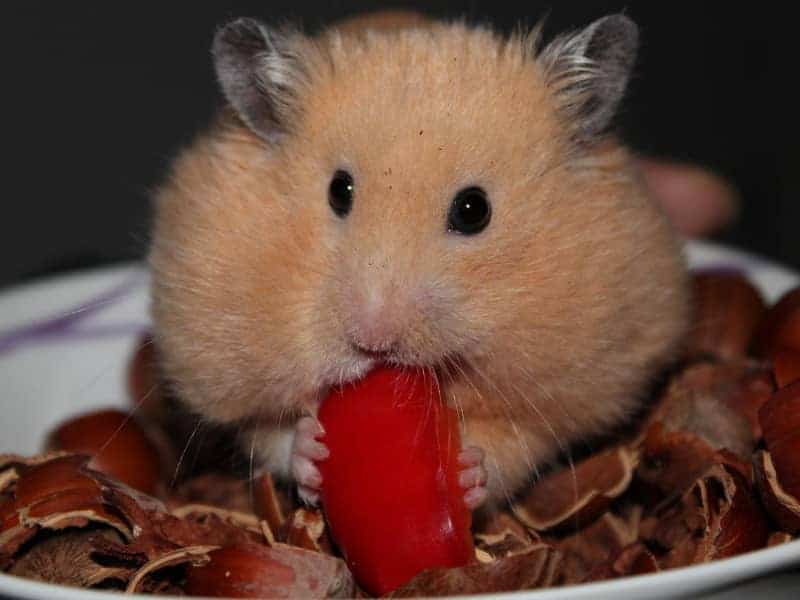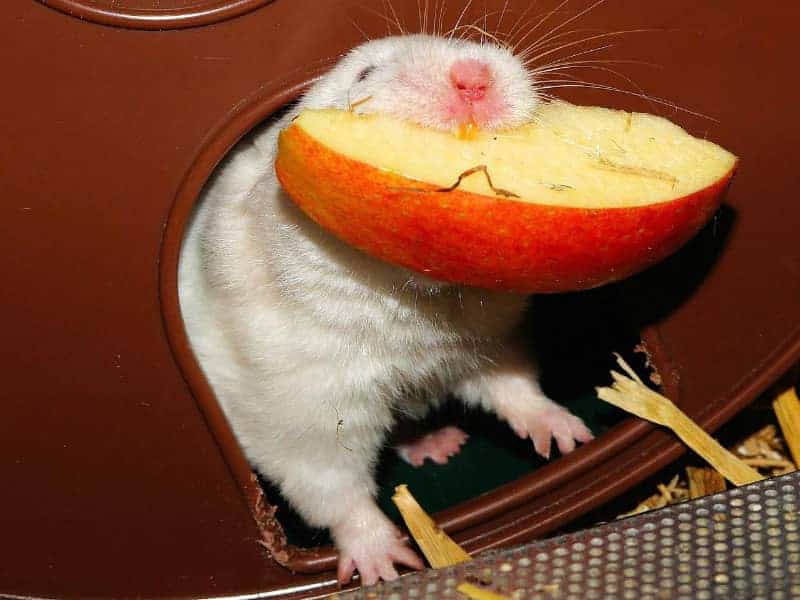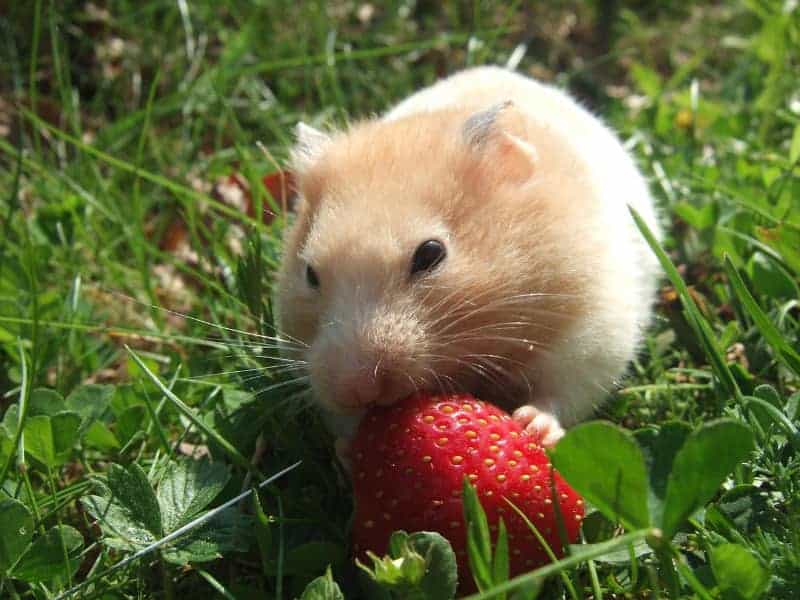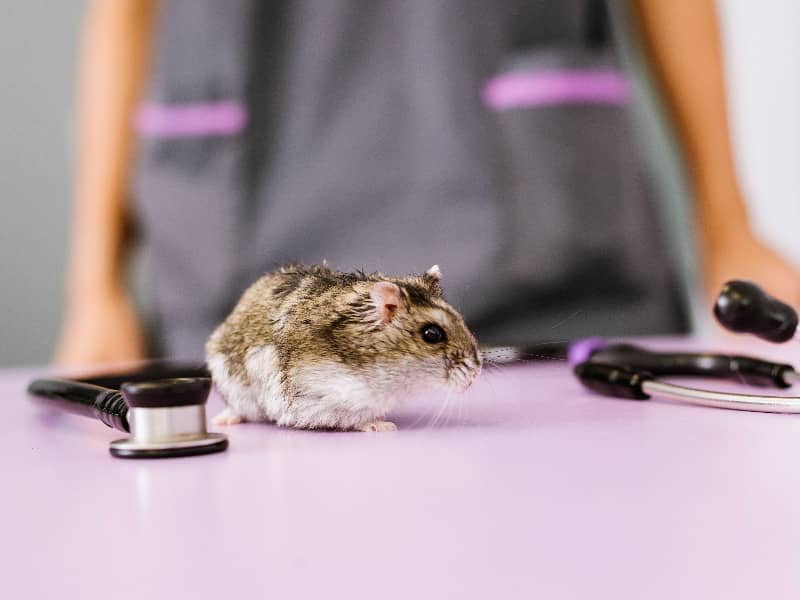
Cutting hamster claws
Trimming a hamster's claws is more than just a cosmetic procedure. It plays a crucial role in the health and well-being of your little friend. Neglected claws can lead to a number of problems that are unpleasant for both the hamster and you as the owner.
- Cutting hamster claws
- Cutting hamster claws - health aspects
- How do you recognize that the hamster's claws need to be cut?
- The right time and the right technique
- Tips and tricks for stress-free hamster claw cutting
- FAQ: Cutting hamster claws
- How often do I need to trim my hamster's claws?
- Can I cut my hamster's claws myself?
- What do I do if bleeding occurs during cutting?
- How do I hold my hamster while cutting its claws?
- Is claw cutting painful for the hamster?
- Can I use normal nail scissors?
- How can I tell if my hamster's claws are too long?
Cutting hamster claws - health aspects
Your hamster's well-being should always come first. Claws that are too long can cause serious health problems. They can dig into your hamster's paw pads and lead to painful inflammation.
In addition, your hamster may have difficulty walking and climbing, which significantly restricts its mobility and quality of life. In severe cases, the claws can even become so deformed that they grow into the flesh and have to be surgically removed.
So it's not just a question of aesthetics, but above all a question of health. A hamster with well-groomed claws is a happy and healthy hamster. And a healthy hamster is ultimately easier to care for and more fun for you as the owner.
Avoidance of injuries
Not only the hamster itself, but also you as the owner can be affected by excessively long claws. A hamster with long claws has an increased risk of injuring itself or others. When climbing or playing, the claws can get caught, which can lead to painful tears or even the claws breaking off.
Handling a hamster with long claws can also be unpleasant and even dangerous for you as the owner. The sharp claws can scratch or prick your skin, which is not only painful but also increases the risk of infection.
It is therefore important to check your hamster's claws regularly and trim them if necessary. This will not only prevent injuries to your hamster, but also protect you from possible discomfort.
How do you recognize that the hamster's claws need to be cut?
Your hamster's claws grow continuously, similar to other pets and humans. It is therefore important to check regularly whether they need a trim. But how do you know when it's time for a trim?
Signs that claws are too long
Overly long claws are not only a visual problem, but can also affect your hamster's behavior. If you notice that your hamster has difficulty walking or behaves unsteadily when climbing, this could be a sign that its claws are too long.
Another indication may be that your hamster tries to sharpen its claws on different surfaces. This is a natural attempt to regulate the length of the claws, but it is often not enough.
Sometimes it is also obvious that the claws are too long because they bend or even spiral. In such cases, it is high time to trim the claws to avoid health problems and injuries.
Behavior of the hamster
Your hamster's behavior can also indicate whether its claws are too long. A hamster in pain or feeling unwell will be less active and may even withdraw completely.
A change in gait or limping can also be signs that your hamster's claws need trimming. If you notice such changes in behavior, you should take a closer look at your hamster's claws.
It is always better to act early before serious problems arise. Regular checks and, if necessary, claw trimming are part of the basics of hamster care and should not be neglected.
The right time and the right technique
Claw trimming is a sensitive procedure that can be stressful for both the hamster and the owner. It is therefore important to choose the right time and the right technique to make the process as pleasant as possible.
When should claws be trimmed?
There is no fixed time when your hamster's claws need to be trimmed. Rather, it depends on various factors how quickly the claws grow and when a cut is necessary. Some hamsters need a trim every few weeks, while others may only need a "manicure" every few months.
It is advisable to check your hamster's claws regularly to see if they need trimming. A good time to check them is during the weekly cage cleaning, for example. This way you can ensure that your hamster's claws are always in good condition and act in good time if necessary.
Cutting hamster claws - What is the best way to proceed?
Cutting claws requires calm, patience and the right tools. Special nail clippers for small animals are usually the most suitable, as they cut precisely and safely.
Before you start cutting, you should place your hamster in a calm and safe environment. A towel or soft pad can help to keep the hamster calm during the cut.
It is important to cut only the tip of the claw and avoid the so-called "quick", which is the sensitive part of the claw that contains blood vessels. A cut in this area can be painful for the hamster and lead to bleeding.
If you are unsure how deep you should cut, it is better to be careful and only cut a small piece. You can always recut, but cutting too deep can have serious consequences.
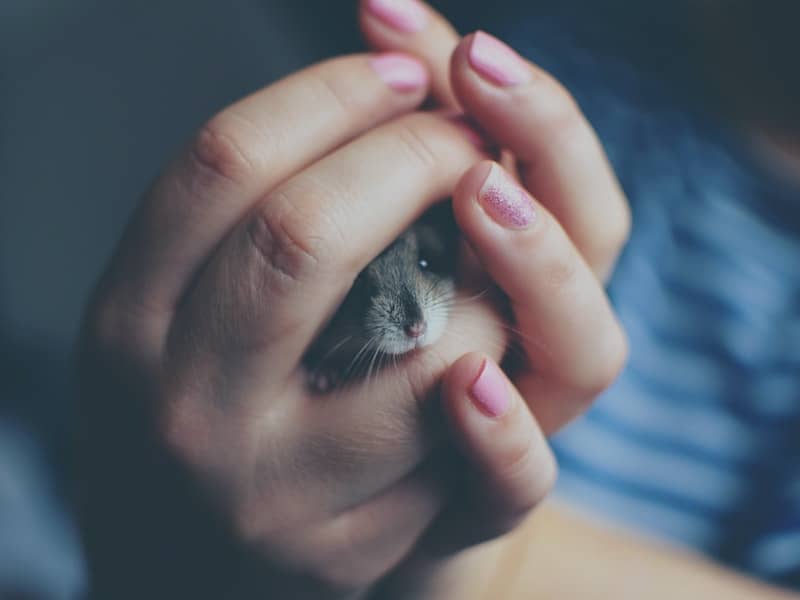
Tips and tricks for stress-free hamster claw cutting
Claw trimming is a stressful experience for many hamsters and their owners. However, with the right tips and tricks, you can ensure that the procedure goes as smoothly and stress-free as possible.
Cutting hamster claws - preparation and required utensils
Good preparation is the be-all and end-all for a successful claw cut. Make sure you have all the necessary utensils to hand before you start. This includes special nail clippers for small animals, a towel and possibly a small light to make it easier to see the claws.
It is also helpful to have a hemostatic agent to hand in case of minor bleeding. This is a special powder that stops the bleeding quickly and is available in any pet shop.
How do you hold the hamster properly?
Holding the hamster is often the most difficult part of claw trimming. Many hamsters are naturally anxious and do not like to be held. This is where a towel can be useful. You can gently wrap the hamster in the towel so that only the paw with the claw to be trimmed sticks out.
Another tip is to place the hamster on a raised but safe surface, such as a table. This way the hamster has fewer opportunities to escape and you can reach the claws more easily.
Stress reduction when cutting claws for you and your hamster
It is not only important to minimize stress for the hamster, but also for you as the owner. Take your time and try to remain calm and relaxed. A nervous owner often transfers their tension to the animal, which makes the situation more stressful for both parties.
If you notice that your hamster is very restless or resists strongly, it is better to take a break and try again later. Sometimes several short sessions are more pleasant and successful than one long, stressful attempt.
FAQ: Cutting hamster claws
How often do I need to trim my hamster's claws?
The frequency of claw trimming varies depending on the hamster and its living conditions. Some hamsters need a trim every few weeks, while others only need a "manicure" every few months. It is advisable to check the claws regularly.
Can I cut my hamster's claws myself?
Yes, with the right preparation and the right tools, you can trim your hamster's claws yourself. However, if you are unsure, it is advisable to ask a vet or an experienced groomer for help.
What do I do if bleeding occurs during cutting?
If you accidentally cut the "quick" of the claw and bleeding occurs, you should use a hemostatic agent to stop the bleeding quickly. This powder is available in pet shops.
How do I hold my hamster while cutting its claws?
A towel can be helpful to keep the hamster calm during the cut. Gently wrap the hamster in the towel so that only the paw with the claw to be cut sticks out.
Is claw cutting painful for the hamster?
If done correctly, claw trimming is not painful for the hamster. Make sure you only cut the tip of the claw and avoid the sensitive "quick".
Can I use normal nail scissors?
It is better to use special nail clippers for small animals, as these are more precise and safer. Normal nail clippers are often not sharp enough and can bruise the claw instead of cutting it cleanly.
How can I tell if my hamster's claws are too long?
Signs of excessively long claws can include behavioral changes, difficulty walking or climbing and visibly excessively long or curved claws.
Author

-
Garden animal - A life with nature
Welcome to my animal blog! My name is Dirk and I am happy to take you on my journey through the fascinating world of animals and gardening.
Born 54 years ago, I have had an insatiable curiosity for the animal world around me since childhood. Although I have moved professionally in other industries, my true passion has always been animals and nature. It is remarkable how a small garden has become such an important part of my life.
Many of my fondest memories are associated with the animals that share our home. Whether it's the curious squirrels that scurry across the trees in the morning, the colorful variety of birds that visit our feeders, or the busy bees and butterflies that pollinate our flowers, every moment with them is invaluable to me.
This blog is my contribution to share my experiences, discoveries and insights with like-minded people. Here I will share stories of unforgettable encounters with animals, give tips on gardening and creating wildlife-friendly habitats, and take you on my journeys through nature.
Thank you so much for being here!
Cordial,
Dirk aka garden animal
Last posts
- 27. February 2024PetsVeganes Hundefutter – Grün und Gesund?
- 18. January 2024ChickensOregano für Hühner
- November 27, 2023HamsterDiurnal hamsters
- November 24, 2023HamsterHamster hammock

